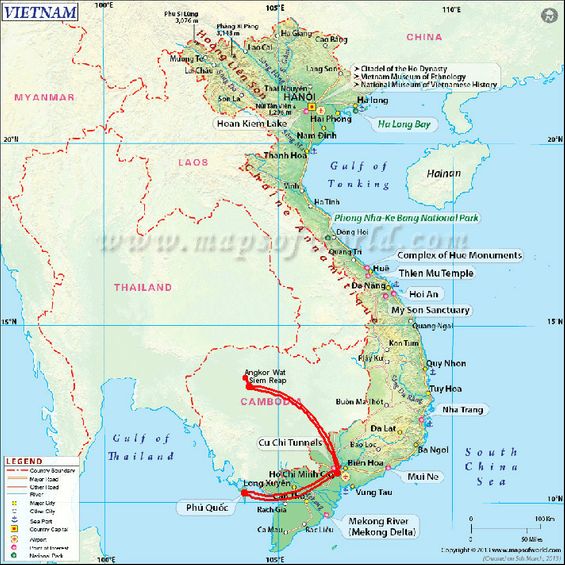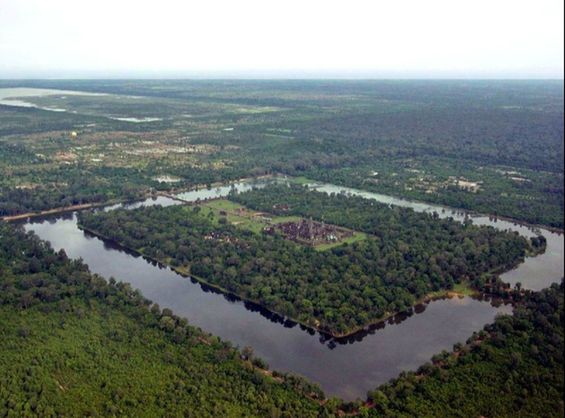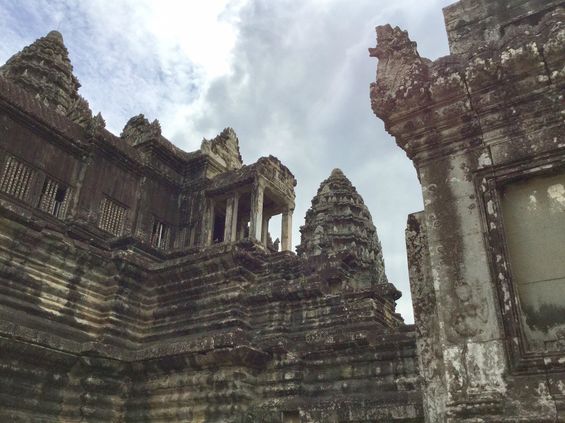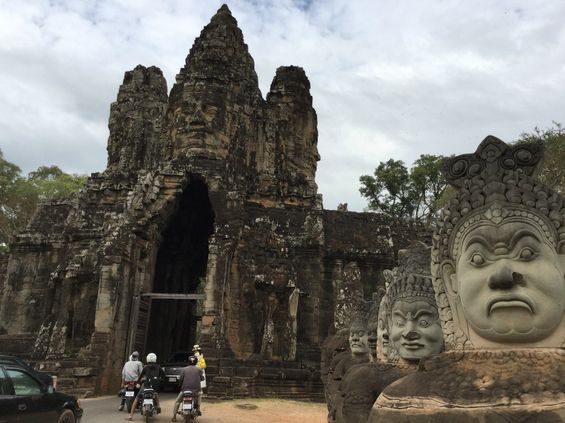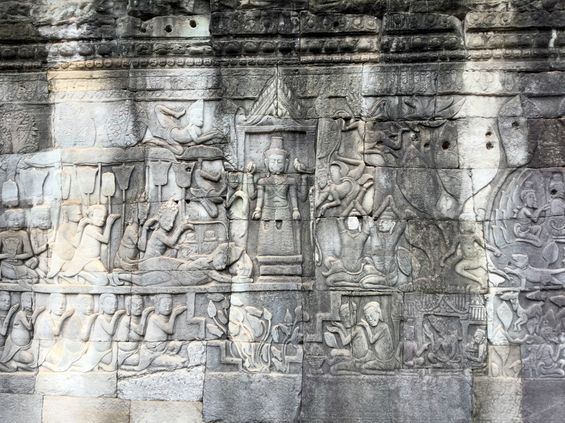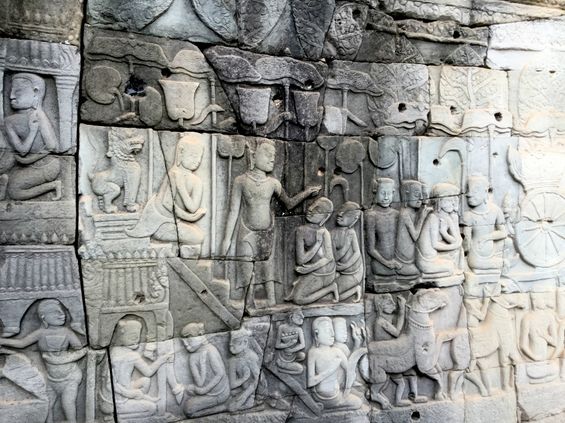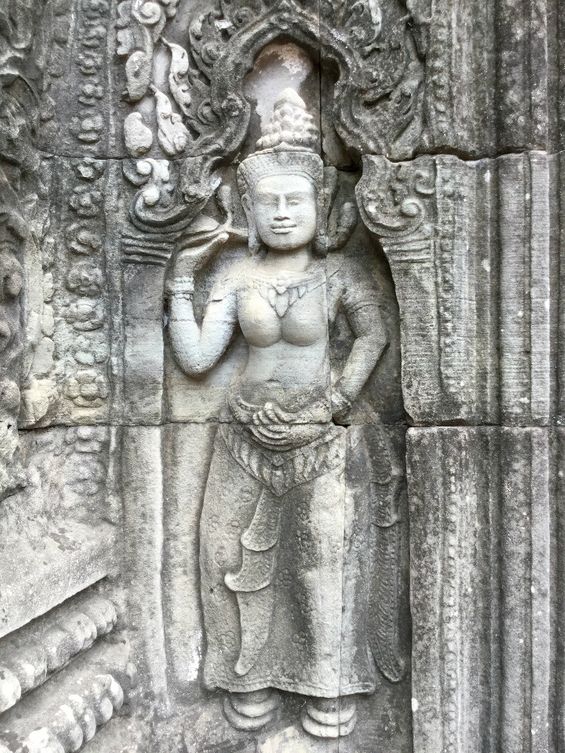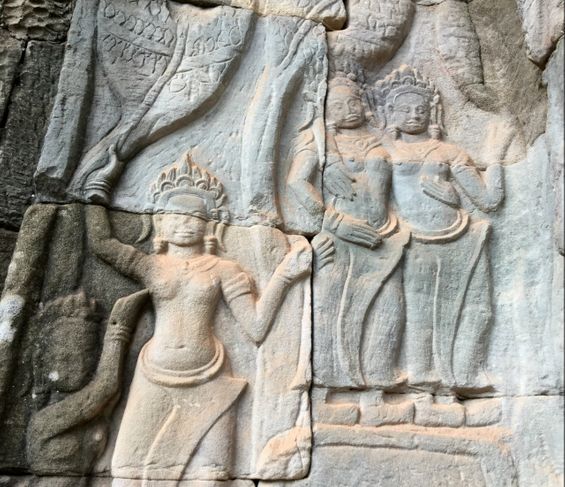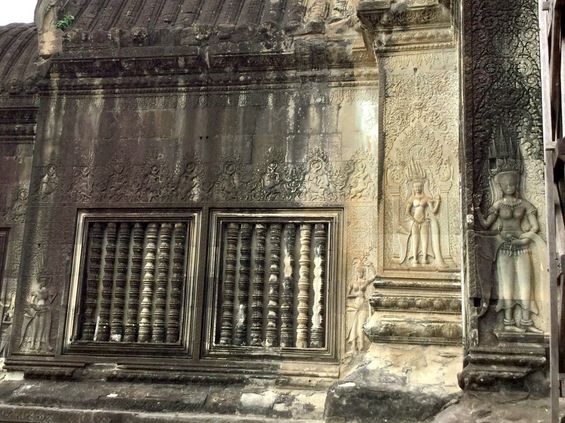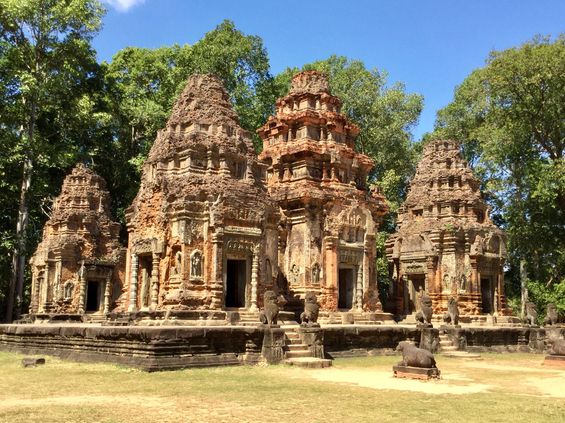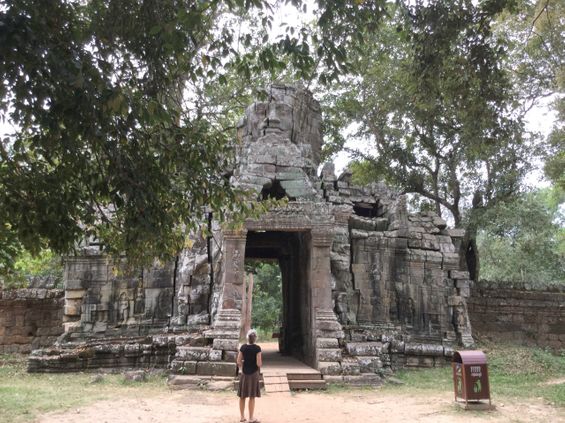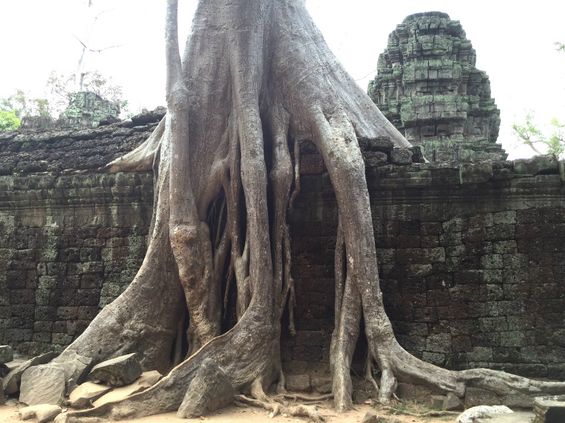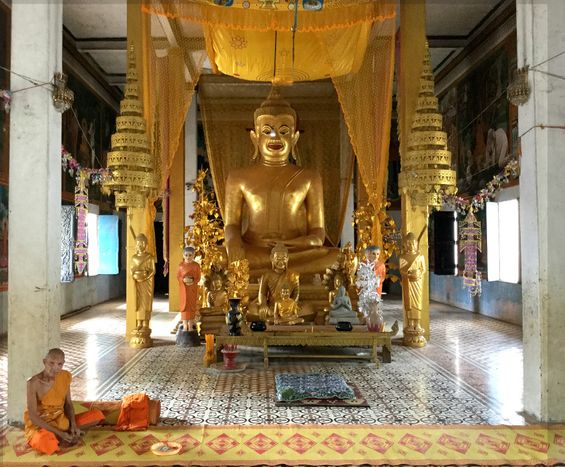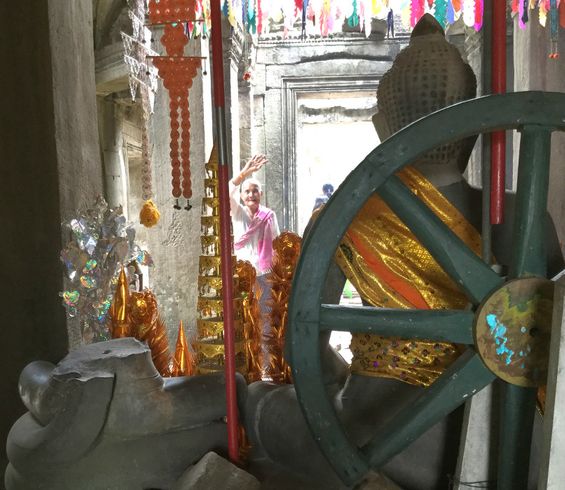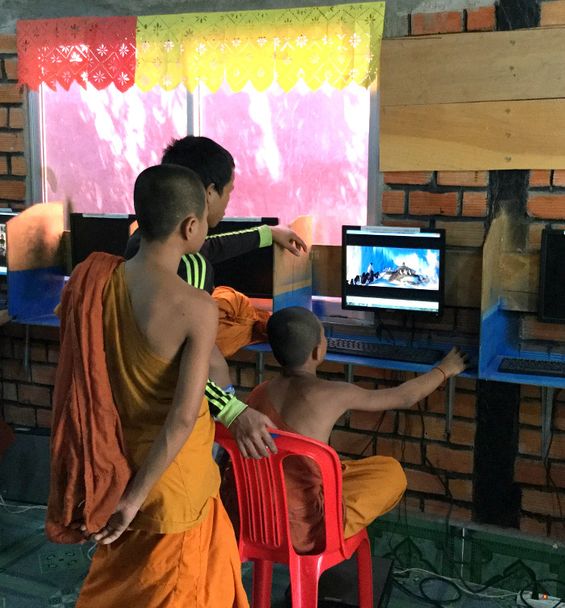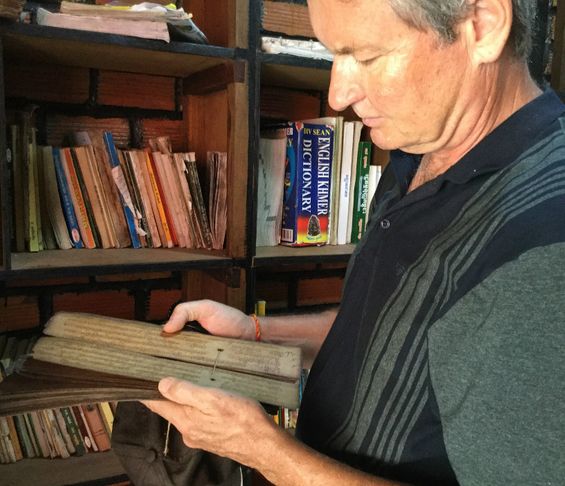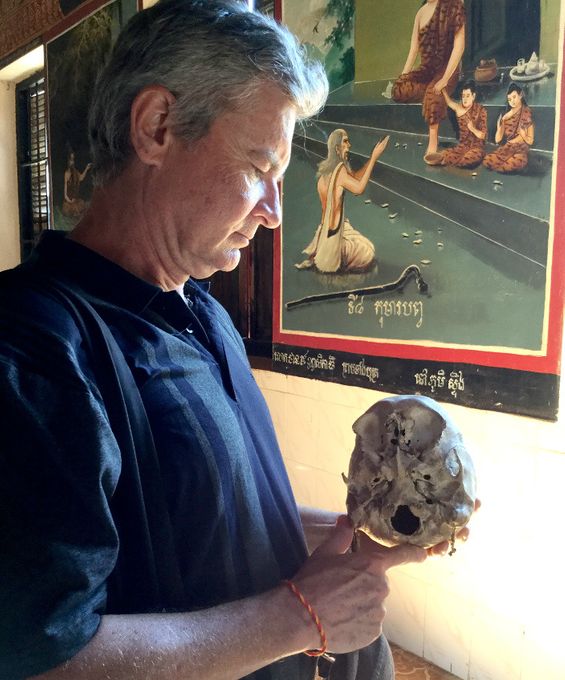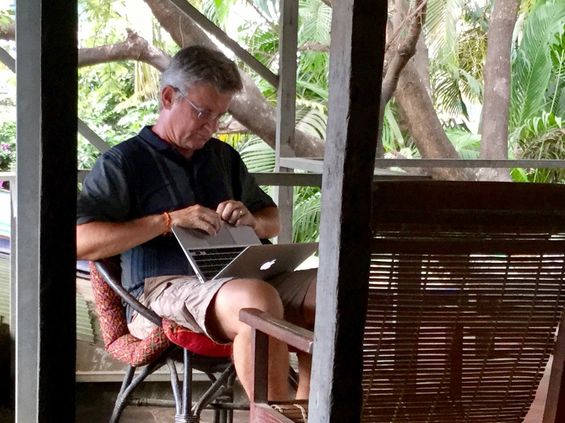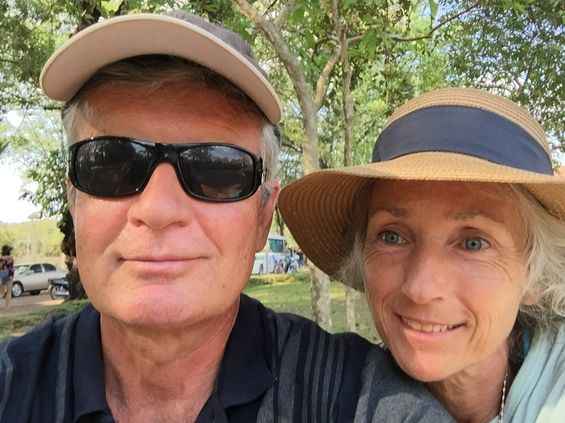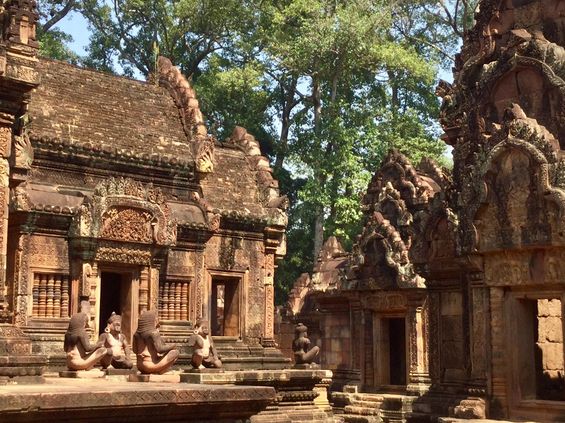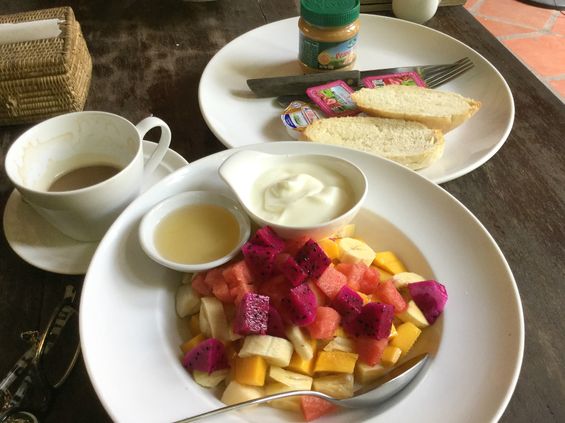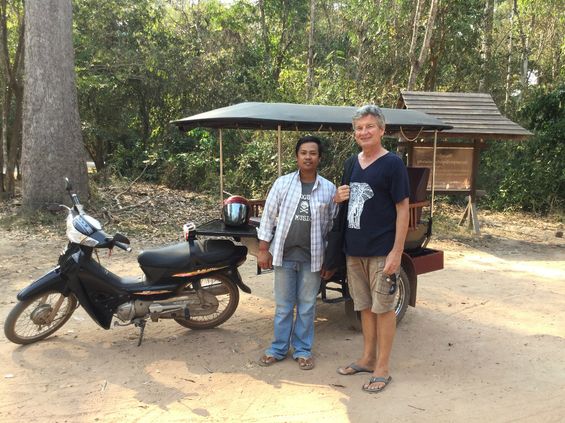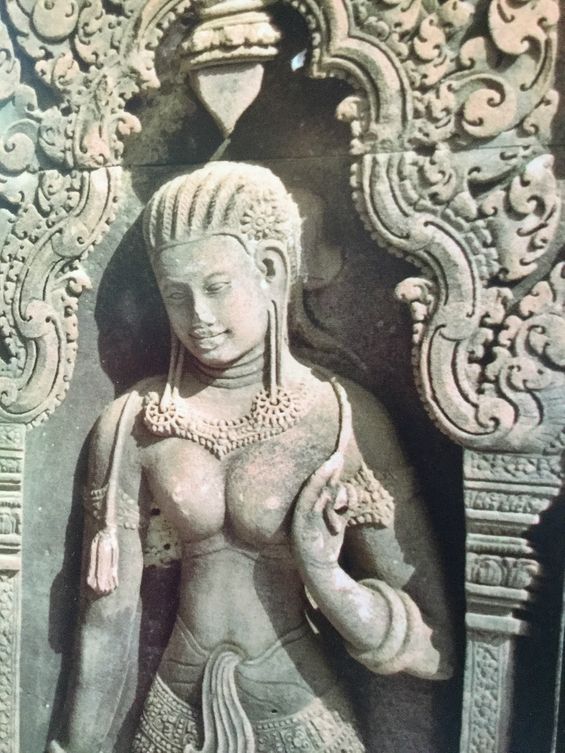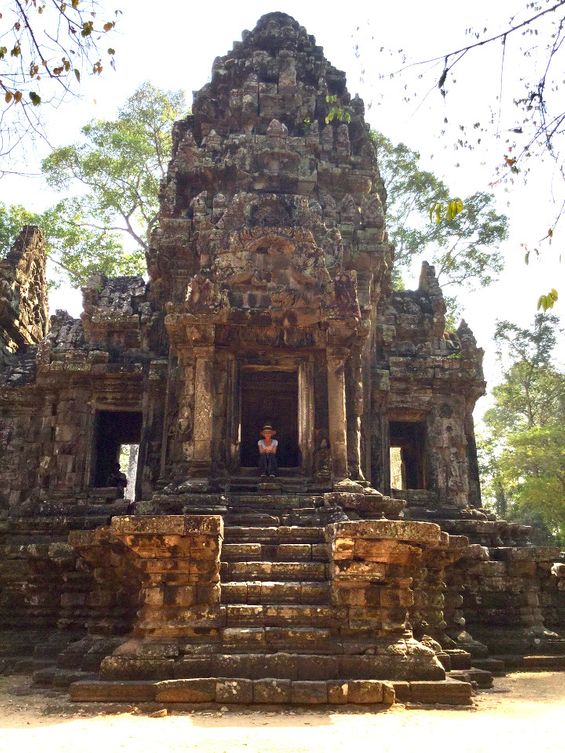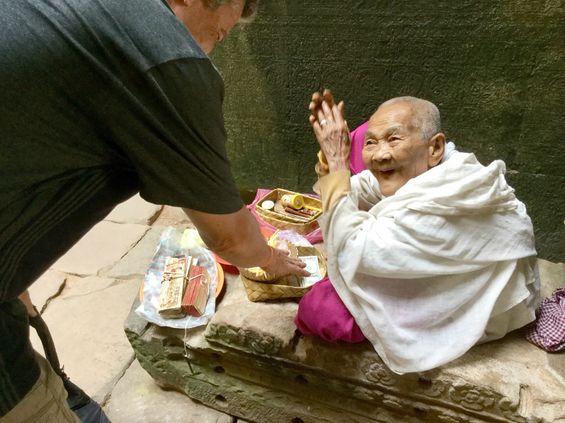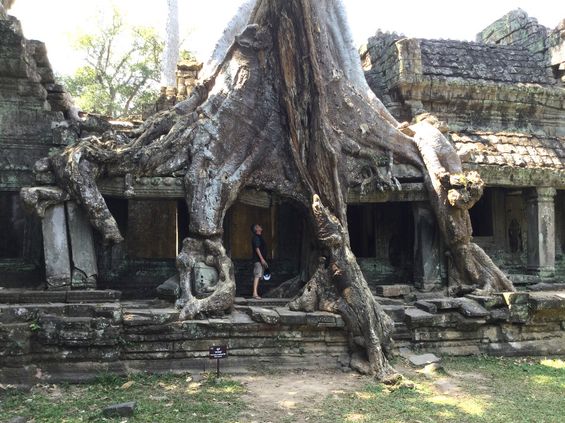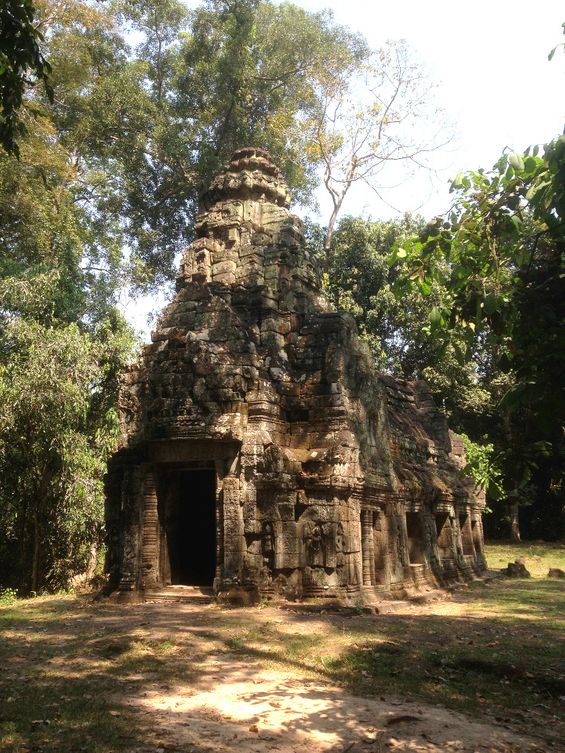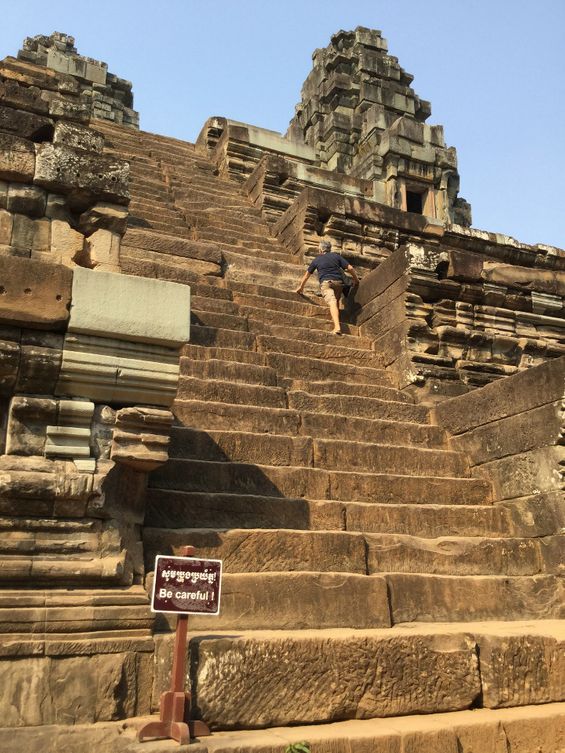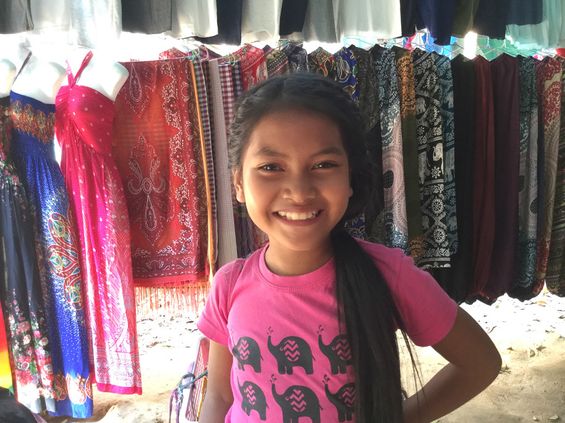Siem Reap: 2017
We returned to Saigon then flew to Siem Reap, the gateway town to Angkor Wat and all the other Angkor temples and cities.
Angkor Wat (Capital Temple) is the best known of the enormous array of cities, temples, hospitals and other buildings that are spread over about 50 sq. km of central NW Cambodia. This internet photo shows the ~1.5 sq. km layout of Angkor Wat. The scale is so large that it is difficult to take photos that give any sense of the extent and grandeur of the different sights, though we'll try...
It's not only the area covered by these monuments, it's the height! The big stones were carried up the stairs by elephants as the temples were built. Most of these buildings are about 1000 years old, compared with 400 years for the Taj Mahal in India, 1000-2000 years for the Buddhist temples in India and Sri Lanka, up to about 3000 years for some of the Mayan ruins in Belize, and almost 5500 years old for the Ggantija temple in Malta.
In Angkor Thom (Great City - 9 sq. km), the central temple called the Bayon contains 54 towers that have 4 faces facing the 4 cardinal directions. .
The entrance causeway through the moat leading into Angkor Thom is lined with Asuras (demons) on one side and Devas (gods) on the other. Here are some of the demons and the gateway into the city.
Not only are these just phenomenal buildings, but the walls and long hallways are covered in complex stories carved into the stone as bas-relief sculptures. There are epic stories of war (note the happy soldier)...
Kings and their fawning subjects...
and depictions of daily life.
There are also hundreds and hundreds of full-breasted apsaras ('heavenly nymphs). The kings who requisitioned the buildings seemed to have a particular liking for these - they pop up everywhere...
everywhere,
Everywhere!
Besides the big, busy areas like Angkor Wat and Angkor Thom, there are many smaller, quieter areas like Preah Ko. Most of the temples in this region were originally Hindu, but were changed to Buddhist temples and filled with Buddha statues as various kings became Buddhist. This one remained a Hindu Shiva temple, as indicated by Nandi the bull out front, Shiva's trusty vehicle.
All through the Angkor area, people are allowed to walk in and through the ruins, with only the most dangerous and crumbly areas roped off.
There is a massive, never-ending restoration effort ongoing, but the jungle relentlessly tries to reclaim the ruins.
Meanwhile in the little town of Seam Reap, life goes on and people try to make a living from the hoards of tourists descending on Cambodia to see the amazing Angkor ruins.
Buddha carver.
Bamboo Jew's-harp salesman.
Not all the old temples are just historical - many still support active monasteries...
and convents. Here, one of Roxanne's buddies waves good-bye.
On Saturdays, the young monks at the monastery in Lolei get time off from school (they attend the same school as the villages).
There's often interesting stuff at the active monasteries, like old sutras written on bamboo or palm leaves...
and bone cabinets...
and skulls;
and there're always monkeys!
Bloggin'...
Selfie!
Temple with monkey warriors.
Our regular breakfast: fruit, honey, yogurt, baguette, jam, peanut butter, and milk-coffee!
Panha (pan-ya) our tuk-tuk driver, and John.
Apsara ('heavenly nymph').
Another apsara.
Eeeeeww...!
Street vendor on Pub Road - all sorts of apparently edible insects and snakes...
John getting a blessing from a temple nun.
The jungle is always reclaiming the temple lands.
What we want our next house to look like.
The stairs are daunting at times. Each stair is at least twice as tall as it is deep - it's not really a good idea to look down until you're at the top.
Pisey the salesgirl. It's pretty tough not to end up paying twice the going rate when you need to bargain with one of these Vietnamese salesgirls...
